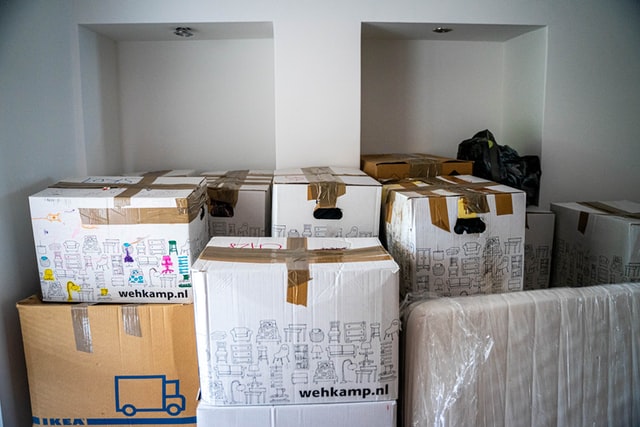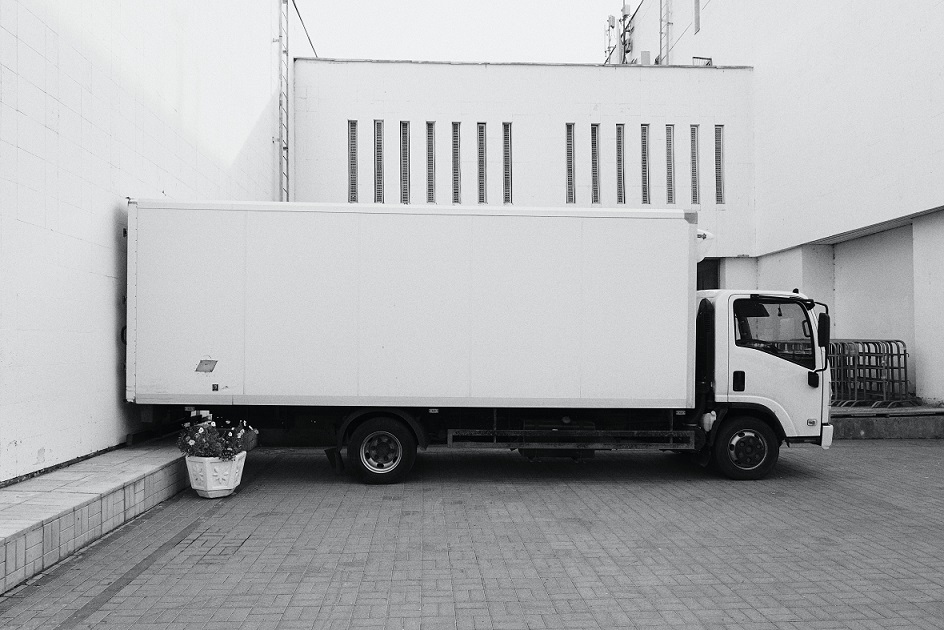|
|
|

The reasons for looking for storage options are dozens. You are probably moving out of your home, to a new one, which is not ready yet. Or you are downsizing your current dwelling and it turns out that it simply does not have enough space to accommodate all your possessions. Or you have inherited your late aunt’s furniture and you don’t know where to put it, since you live in a small apartment. The reasons might be more than you can imagine.
If the household goods you own need to be put in storage for a certain period of time, the company that performs your moving can provide a service of that kind. Make an inquiry and ask the people at the firm to prepare a quote for you. Even if they ask for a little bit more money than their competitors, it will still save you a lot of hassle and strain to have your original re-locators move your belongings to the storage. However, before actually choosing their storage service, ask them whether you will have full access to your things. Provided that you do, learn about the kind of notice that is required.
What you will also have to do is to determine how much storage space you will need. Before you actually start looking for a storage facility, you have to know how big of a storage you actually need. Get one that will perfectly accommodate your possessions without leaving a big part of the premises empty. After all, you don’t want to be paying for the empty space you are not using, right?
However, prior to going on a storage ‘hunt’, ask yourself and answer the following questions:
Answering these questions will help you determine what you actually need. What you don’t, you can easily throw away or, even better, sell at a yard sale and make some money.
Next order of business – do the objects you are storing require a special storage space? Vehicles, for example, do. As well as food, drinks, antique items, important documentation, etc. Familiarize yourself with the climate-control options. If you are to be storing any of the aforementioned items, you will definitely need a climate-control storage unit.
Once you have finally decided what kind of stuff and how much of it you will be storing it’s time to determine the size of the storage you will be renting. The following information is pretty much standard for all companies (Length x Width x Height):
Do a lot of research. Do not rent the first storage facility you find. Make sure you gather enough feedback and read plenty of reviews. Choose a storage that will be convenient to you – close to your home, or at least to your workplace, so that you can have fast and easy access to it whenever you need. If you are to be storing in a facility that is in an area, quite unfamiliar to you, contact the local police department and ask about the crime rate in that particular area. This can make you change your mind.
Bottom line is: do not make any hasty decisions. The more research and deliberation you do the better choice you will make.
If you need a professional company to relocate your business to your new shiny office, you’ll never go wrong by contacting US Border Movers.

So, you’re moving to a different country — exciting, isn’t it? At this point, you are no doubt overwhelmed with all the loose ends you still need to tie up. After all, the international moving process is a lot more complicated than moving domestically.
Your main objective is to scout out an international shipping company that can help you move your belongings to your new home. Since this has grown into a bustling industry, there will be no shortage of businesses that can help, but it does take some work to unearth a company that fits your needs
While the professionals can handle the logistics of getting your belongings from ‘Point A’ to ‘Point B,’ that doesn’t mean you are off the hook. Here are five chores you should not forget in order to ensure a seamless transition during your international move. Research items you cannot move
You might have already sifted through your belongings to decide what will come with you and what won’t. However, you must remember that you are not allowed to bring certain items into other countries. These can include things like:
Contact your country’s embassy where you will be moving and ask them to provide a list of things you can and cannot bring. Your carrier also has specific criteria for items they will and will not ship. Familiarizing yourself with these will also prove beneficial. This will save you time and serious hassle during your international move.
It may seem like a no-brainer, but the more you learn about the country you’re moving to, the smoother the transition will be. This isn’t necessarily hard data like demographics, crime rates or median income — you should be more concerned with local customs, proper etiquette and other social conventions that will dictate how you act.
Like most information, you can obtain some helpful literature from your country’s consulate.
It is important to keep important documents or other small, valuable items on you instead of sending them off with your carrier. Take an inventory of the items and pack them accordingly.
You will have to be somewhat picky during this process, because you can’t bog yourself down.
You probably won’t bring everything you own, especially if the international move is not a permanent arrangement. Find a secure, reliable long-term storage facility to stow your possessions with. Take into account the amount of room you will need and if you require any specific accommodations, like climate control.
You won’t get far in your new home without your finances in order. This is key, and you will want to consult a special representative at your bank to see how they facilitate international moving.
For starters, you should close all accounts that you will not be using while living in your new home. By keeping these active, you are just opening yourself to fraud and you would have a hard time monitoring them. And, of course, you will also have to convert your money into the new country’s currency.
Moving to a new house? US Border Movers company will do all the heavy lifting for you.

Moving day can be one of the more stressful days of your life regardless of how much preparation you have done. However, I have a few simple suggestions that can help make it less stressful and a heck of a lot easier.
1. First of all, plan ahead. I do not mean the week ahead, but months in advance. I would look three to six months in advance and arrange for moving vans and help. Why? Nothing more frustrating than having your date and not having the help or the vans. I will assume that you have already done what needs to be done as far as settlement and the like. Furthermore, take into consideration the time of the move. For instance, try not to move to the upper midwest during January and avoid the south in the middle of August. Just a little common sense.
2. Now that we are three months out and you have lined up the help and the vans, start packing. Yes, this early. Do a little bit at a time and you will be surprised how painless the process can become. Start with the things that you do not use or that are already in storage. Move these items to an area where they can be consolidated and are out of the way. Additionally, take the time to throw out some of the things you will no longer need or have been needlessly saving for years. Disposing of these items will make moving easier.
On the same subject is labeling. Everyone has different philosophies, but the one I like the best is labeling by room. For instance, when you pack a box you pack by the room the stuff originated from. The living room stuff goes in the same boxes. The labels are then added and the contents are outlined on the label. I find this to be helpful when moving in and looking for something- if you know what room it came from it is a lot easier to find it. Bottom line is to label everything!
3. A consideration that people do not think of is the threat of theft. Have someone watching over the van at all times. Sad to say it, but in today's world it is too easy to walk by and grab something and it is also likely to happen.
4. Keep an inventory of everything that is valuable and being moved by outside help. I suggest keeping a written and a videotaped record of everything that would cost a decent amount to replace should an accident occur.
5. Do not cut corners. I realize that it is a pain to stuff glasses with newspaper and to line plates, but these exercises need to be done. If you have kids, let them do this part so that they feel they will help. Another corner to not miss is to cover anything that can get scratched and consider taking the smaller important items yourself- tv, vcr, cd player, computer. I always feel safer when the electronic equipment I own is in my own car. Additionally, do not cut corners by hiring amateurs. The professionals have moved thousands of pieces of furniture and know what they are doing.
6. Conversely, do get help from friends in some of your preparations. For instance, have a garage sale and sell some of the things you will not need or do not want- the accumulated excesses.
7. Finally, if at all possible, clean the new digs as thoroughly as possible before moving in. Do the floors, any painting that you can, tear out rugs, etc. The less moving of furniture that you have to do once it is in the house, the better. Also, remember to get the utilities and heat turned on.
In summary, moving will be stressful regardless of what you do in preparation, but you can take some simple steps to minimize the stress. Also, remember that moving is stressful for all involved so be careful before jumping at someone for something they say or do.
Need a hand? US Border Movers can help you with professional packing services.

Congratulations on designating Tennessee as your new home. With the population around 6,346,105 (Census 2010) individuals, Tennessee stretches from the Appalachian Mountains to the Mississippi River giving you the options to fish, hunt, and do every outdoor activity you can think of.
The mild climate makes the great outdoors a favorite pastime in Tennessee. From the Great Smoky Mountains National Park down to the birth of Blues, Tennessee is full of fun things to do. Explore caves, mountains, trails and hiking tours that will make you appreciate the beautiful landscape of Tennessee.
You will enjoy its mixture of rich history, agriculture, tourism, soulful food and music that makes it a staple for individuals.
If you are not persuaded, we have supplied some additional information to help with you getting your move started to Tennessee.
With so much to organize and pack, you may seem slightly overwhelmed with finding the right moving company for the move. Before you make a hasty decision and regret picking the mover, here are some tips to help you pick the right mover and protect your move:
Every city is different. Depending on what you are looking for out of your next home, there is no doubt that you will be able to find it. Housing prices in Tennessee are fairly moderate compared to the Northeast part of the country. If you are looking for heavily populated areas, Chattanooga, Knoxville, Nashville, and Memphis give you the metropolitan feel instead of the country back road appeal.
Mountainous areas of Tennessee like Bristol, Chattanooga, Johnson City and Knoxville are outlined by the Appalachian Mountains.
The state's most populous area, middle Tennessee includes cities such as Nashville, Clarksville, and Murfreesboro. You will find rolling hills and fertile stream valleys in this part of the state as well.
Out of the three territories, Western Tennessee is the least populous with Memphis as the largest city in the area.
Largest Cities by Population: Memphis, Nashville, Knoxville, Chattanooga, Clarksville, Murfreesboro, Jackson, Johnson City, Kingsport, Franklin.
If you need a professional company to relocate your business to your new shiny office, you’ll never go wrong by contacting US Border Movers.

Knowing your rights and being fully educated on your move is an essential to having a successful move. Most people today are unfamiliar with proper moving terminology and processes. This lack of knowledge could potentially cost them more money and stress than they could even imagine. Understanding what type of move you will be performing is step #1 in starting your move on the right path.
In the process of searching for a moving company, you are often asked if you are moving interstate or intrastate, but knowing the difference between the 2 could be tricky. The benefit of being educated on this topic when it comes to your move is that you are better protected against possible scams, and more importantly, you’ll know your rights during your move. Knowing what type of move you are performing accompanied with the laws and regulations can save you time, energy, and money. If you are not sure between the two types of moves, we’ve broken them both down for you.
What is an Interstate Move?
- When you are performing an interstate move, you are essentially moving or transporting goods in and out of state lines, including international moves.Interstate moves are governed by FMCSA (Federal Motor Carrier Safety Administration) rules and regulations. It is considered an interstate move if it involves a long distance moving company crossing a state line at any point during the move. Even if the actual moving truck or van doesn’t cross state lines (i.e. your goods are moved via train), it is still considered an interstate move if your goods cross state lines.
What is an Intrastate Move?
- Intrastate moves consist of movers completing a move without crossing the border of another state.Intrastate or local movers are not regulated by the FMCSA. Rules that apply to interstate moves are completely different from intrastate. Moving within a state means that you will have to understand the terms and conditions of moving as they change based on the state you reside in. Rules and regulations are outlined by the individual states and should be researched properly. Some states have more stringent licensing and monitoring guidelines than others.
Although you may be completing an intrastate move, moving companies can charge a long distance fee. Before choosing a licensed mover, make sure you aren’t hit with fees you weren't made aware of. Understand your rights and verify licensing with each moving company before choosing. For more information on state guidelines, contact your state agency.
You can request your antiques moved by a professional moving company, such as US Border Movers across the United States and Mexico.

Self storage is cost effective, safe, and convenient. Its benefits include:
Self storage allows you to
You can store and organize most anything for use in self storage. For example, you might choose to store mobile equipment, office files, business records, manufacturer's samples, seasonal decorations, theatrical scenery and any additional supplies. Furthermore, self storage can help your traveling sales staff by allowing them to have stock on hand.
Inquire with a storage consultant to help you select a space that will best suit your specific needs. You will find that a small space that is efficiently packed will be less expensive than a larger space. However, if your needs are such that you will be using the space quite often, you may find that a larger space (well organized with file boxes and racks) makes more sense for you. Most self storage facilities are willing and able to make modifications to meet your specific needs. Additionally, you may find that many self storage facilities are eager to offer additional services to help their business clients. For specific details, contact the self storage consultant of your choice.
Keep in mind that (like any other agreement) you should always read through your self storage agreement carefully and thoroughly. As this is an important document, be sure to keep it in a safe place. Contact the staff at the self storage facility if you have any questions.
Remember, the items you choose to store in a self storage space belong to you, and they remain your sole responsibility. For this reason, you should always have them insured. The self storage facility will not be responsible for insuring your items. Don't forget to contact your company's insurance provider to see if your coverage may already have a provision for items which are stored offsite (you may already be covered). If not, your self storage consultant may be able to assist you with the provision of insurance cover.
You may not store any items that are illegal, stolen, hazardous, flammable, explosive, perishable, environmentally harmful, or that may be a risk to the property of any person (for example: acid, gasoline, chlorine, paint, etc.)
Click here if you are in need of a professional moving company to help with moving your house equipment after packing them. Just select the services you need and pay for the space you use. It's easy.

Whether moving by choice or because your company requires you to do so, temporary housing is often necessary to bridge the gap between arrival in a new community and finding a permanent residence. This interval can extend from a few days to several months, so any short-term move needs to be planned accordingly.
For individuals and families seeking temporary housing, there are three main options: regular hotels, extended stay hotels, and rental homes/apartments.
Whether researching temporary housing on your own, working with a reputable real estate company, or considering the advice of a relocation service, you’ll need to answer several questions:
Tight housing markets, such as in New York City and San Francisco, can present an especially difficult challenge when you are looking for temporary housing. In large metropolitan areas where your options are limited and prices are at a premium, extended stay hotels are a real value. However, if your situation requires that you look for a rental property, it may be prudent to seek out newer properties whose owners, sitting on mortgages and in need of cash flow, might be willing to negotiate a short-term lease. Negotiating is part of the game and it never hurts to throw out a price before you rush to the dotted line.
Also, expand your options by considering different neighborhoods, increasing the likelihood of finding a suitable property at a price you can afford. Covering your bases with research, advice and other people’s opinions can only help to ensure that your first experience will be a good one.
If you need a professional company to relocate your business to your new shiny office, you’ll never go wrong by contacting US Border Movers.

Relocation is not an easy task, especially if you need to do things in a hurry! In such cases, a storage company can prove to be pretty useful. You could ask them to look after all your household goods till you are ready to transport them to your new residence. Or if possible, take some belongings with you and leave the rest for later.
Of course, there are plenty of companies offering such facilities; so you need not panic! What you need to do is to check out a few such places and visit them in person. Then you can take a close look at the facilities on offer at each place. If you ring up customer service beforehand, they would be happy to take you around.
When you enter the grounds of any storage company to check out their services, do observe everything carefully. What is your impression of the grounds and the storage areas? Do they look as if the staff takes good care of them—are they neat and clean? If vegetation and plants have been allowed to grow unchecked, especially along the sides of the building, you might need to reconsider. You will find it difficult to gain access to the storage unit at nighttime, especially if the lighting is also poor. It is important that the grounds as well as the internal storage facility are well lit.
Unless the fence around the place is secure (you can check for yourself by walking around the entire perimeter), your things cannot remain safe. Again, a damaged security fence and overgrown vegetation will allow potential attackers easy access. If you are a woman who wishes to visit the storage center at night, you need to be extra cautious.
Find out from the staff how and when you can visit the storage facility—what is the procedure to gain entry after you have handed over your belongings? Above all, you should feel comfortable about leaving your things with these strangers. This is possible only if the company staff exhibit utmost courtesy and professionalism at all times.
Now, in the rare case that you are not able to arrange a personal visit to any of the companies, ensure that all your questions get clarified over the telephone itself. It will be on the basis of the answers provided that you can narrow down your choice to one particular storage company.
The questions that need to be answered during the telephonic interview should include—
So, once you are satisfied with your probing, you can go ahead and book a place at a storage company.
Looking for more relocation guide tips? Visit US Border Movers.

One of the hardest aspects of a self move is trying to determining the size of the moving truck to rent. No one wants to rent a truck that is too big where their household items are sliding all over the place as well as making a few trips back and forth from the old house to the new can be both tiring and expensive too. So just what size truck do you get? Well it may seem obvious that if you have chunky furniture, your best bet would be to get a larger sized van while smaller trucks are ideal for carrying around small furniture, perhaps those that are compact or easy to break down and placed on the truck.
Moving experts however are of the opinion that regardless of the size of your household items, you choose a truck that is larger in size. Depending on which truck rental company you hire, they would more than likely provide you with a general idea as to what type of vehicle you should rent for your specific household items. For instance, if you currently live in a studio apartment that has three rooms worth of household items, then you should rent a truck that is 12-15 feet. Twenty-foot trucks are recommended for those who have five rooms of stuff while a home that has eight rooms of household items should be placed in a 24 foot truck.
Now that the sizing of the truck is out of the way, you can begin your search for a truck rental company. Moving experts would recommend that you get quotes from at least three truck rental companies ahead of moving day. When you call them, be sure to ask them for a price as it regards to the size of the moving truck that you are thinking about renting. Make sure that you read all the fine prints on the truck rental documents; there are usually many clauses in place that isn’t as straightforward as it seems. With that said, when reviewing the documents, ensure that you ask a lot of questions so that you would be clear on what you are getting into.
It goes without saying that if you move during the fall and winter months, you will be saving a lot of money than if you were to move during the summer months. However, if you can only move during the summer months, then you should try to book for truck rental way in advance.
Since this is a self-move it means that you would have to do everything on your own once you rent the truck. With that said, taking out an insurance policy on the moving truck highly recommended since most of these trucks are not insured. While you are at it, you should also get insurance for your household items as well just in case the worst happens on the road.
Finally, remember you would be the designated driver for your move; even if you are not driving, your probably have a friend or family member on stand by to do so. Whatever the case, when you decide on a truck company that suits your needs, you should go into the truck rental company and test out your chosen vehicle before leaving the premises. Spend that extra time checking out every aspect of the vehicle as you keep on the alert for leaks, faulty tires, brakes etc.
If you are looking for more moving tips, visit US Border Movers.

Moving containers are an ideal alternative to booking a moving van. In fact, moving containers are such a smart idea you’ll wonder why you didn’t think of them in the first place. Rather than pack everything into a van and take it to be stored, you pack the delivered moving containers and they pick them up and deliver them wherever you want them.
If you happen to be not quite ready to move into your new home or business, the moving containers can stay where you need them as long as you need them there. When you’re ready to move, just call the moving containers company and off you go.
This type of move is quickly gaining in popularity, as it is not only efficient and affordable, but allows you to pack once, store when needed and then move just once. Who likes the idea of moving twice? With moving containers, this double jeopardy kind of move is eliminated.
These portable moving and storage units are at ground level for easy packing and unpacking. You load your moving containers then lock them. Now, you can either store your moving containers on your premises or call the company you rented your containers from to pick it up and have it stored in a secure outdoor compound or climate controlled warehouse.
If you need containers on a temporary or longer-term basis at your home or business, you might want to check this solution out. You can store your belongings off-site or onsite at your chosen location. That is so easy it’s almost criminal.
If you’d prefer the traditional storage route, just remember you have to get a truck, load the truck, unload it into the storage unit, and return the truck. Then when your need to move, you have to get another truck again, load your belongings (feels like an instant re-run doesn’t it?), move them, unload them (getting old isn’t it?) and then return the truck. What a lot of hard work when you could be saving time and money using portable moving containers.
One other thing about using portable moving containers, is that the company you hire to deliver your containers will also be able to provide you with moving supplies – boxes, tape, packing material and other things you will need as well. Rather like a one-stop move shop, without the expense of a full service move. And even nicer is, these containers are very flexible and come large enough to handle one room of furnishings (or more for a larger move), yet small enough to fit into a parking place at your location. What more could you possibly ask for in terms of onsite convenience?
Looking for a moving service? Click here.

Moving to a new home is never an easy endeavor. As anyone that has experienced it can say, moving is incredibly stressful, no matter how long the distance is between your old home and a new one – even moving home to a nearby location is no easy feat!
There is a lot that can be done to reduce the stress of moving homes, namely planning ahead as much as you can. The last thing anyone needs on moving day is to be rushing around trying to tie up loose ends, buying additional supplies, and dealing with all manner of chaotic situations.
Planning your move can be done once you decide on how the move can be completed – either doing it yourself or hiring a moving company. Once you know what you will be doing, you can plan things accordingly and hopefully have a smoother transition to your new home.
Here are some tips for how to best plan your move:
First and foremost, who will be performing the move? Can you afford to hire professional movers? Do you have the ability to drive a hired truck and perform the move on your own? Will it be a blend of both of these?
Moving by yourself can save a lot of money, and it is also one way to ensure everything is done exactly how you want it to be. You will need to rent a truck or borrow one from a friend, enlist the help of friends and family to help pack and unpack your belongings, as well as buying all of your moving materials (boxes, packaging, labels, etc.).
Doing this on your own can be better suited for shorter distance moves, although it is still achievable for longer distanced ones too. Bear in mind there are still many expenses when moving on your own, with the need to hire a truck and get appropriate insurance for driving is likely to cost a fair amount.
Hiring movers will be a more costly option, but it can help reduce a lot of the stresses of moving. Companies will provide movers to help pack up your goods along with a driver to transport them to your new home, saving you the time it takes to organize and perform these tasks.
There are also hiring companies that will perform pickups and drop-offs for your belongings, while you organize the packing of all of your belongings, providing a middle ground between moving yourself and hiring help.
If you’ll be moving across the border, for example, US Border Movers can make the otherwise difficult process much easier and simpler.
Packing supplies will be some of the most important purchases you make for your move, so you will need to plan a budget for this too. The bigger the home, the more materials you will need, and on average a move involving a couple or a relatively small family will require around $250 for moving.
It is worth noting that more is always better in these situations, as you never want to run out of moving supplies during your big move, as running around getting more supplies will only add to the stresses of the move.
Boxes are perhaps the most vital supply you will need. Remember that you get what you pay for, so scrimping by on cheap moving boxes may result in damaged furniture and belongings. Reusing old boxes can work and is a good way to save money, but only do so if they are in good enough condition – always avoid bent, broken, and damp boxes!
Investing in strong boxes for your move is always advisable, and they won’t be too costly. Buying large amounts in bulk will usually net you a discount, and you can be sure you will need a fair amount for your move, in any case, making the costs well worth it.
Estimating the number of boxes you will need can be difficult, but it is safe to assume you will need at least 100 boxes for a move, and these will need to vary in size too.
As the name would imply, packing tape is the perfect material for securing your boxes. Other forms of tape such as masking or duct tape are a lot more ineffective at sticking to cardboard, so avoid these at all costs.
Expect to buy at least four or five rolls of two-inch-wide packing tape, which should provide you will a few hundred yards worth (depending on the size of the rolls). Again, more is always better.
A hidden gem when it comes to safely pack your belongings, packing paper has many versatile uses for a big move. You can wrap fragile items in it and crush them together to create protective padding for your boxes too.
An alternate to packing paper, but not as versatile, bubble wrap works in a similar way by protecting your personal belongings for the move. One drawback is that it cannot be recycled, which is the case for packing paper, so it may go down to what is cheaper for the move. Bubble wrap is known for being costlier than packing paper too but can be better suited for protecting fragile furnishings and the like.
You will need these to label the contents of each box, so the thicker the better! You want to be able to clearly see what is in each box, so it is a good idea to label them on the sides rather than the top – stacked boxes can hide the top of the below box, making identifying them more difficult.
For self-movers, hiring a hand cart and/or moving dolly can be a massive help for transporting goods to and from the truck. These will reduce the risk of injuring yourself when moving heavy furniture or boxes, and most cost around $10 to hire for a day.
You will find that the company that hires you a moving truck will likely be able to rent these to you as well.

These criteria apply to all cats and dogs. It allows them to enter or re-enter the US from approved countries without quarantine as long as they meet certain criteria.
Fitting a microchip. You can have a microchip fitted at any time but it must be done before your pet is vaccinated against rabies and blood tested.
You can now arrange to have your pet vaccinated against rabies.
Your vet should record the microchip number on your pet's vaccination record at the time of vaccination. The microchip number and date of microchipping should be recorded in a national pet recovery database.
If your pet was vaccinated against rabies before it was microchipped, it may be needed to be vaccinated again.
Pets must be at least three months old before vaccination is permitted. After this time vaccination can take place at any time after the microchip has been implanted. Before administering the rabies vaccine, your vet can check the microchip number.
If your pet has been vaccinated against rabies before it was identified by a microchip, it will have to be fitted with a microchip and vaccinated again. This is to make sure that your pet is correctly identified when it is vaccinated.
Your vet should now arrange to have your pet blood tested. This should take place about 30 days after vaccination.
When your pet is vaccinated, make sure that your vet has recorded the following details on its vaccination record card:
After a pet has been successfully vaccinated against rabies, it must be given booster vaccinations to keep all vaccines up to date. Your vet will advise you when this must be carried out as it must be within the specified time given by the vaccine manufacturer and should be recorded on the vaccination record card. The revaccination interval for cats may be different from that of dogs.
Rabies booster vaccinations will be noted in the pet vaccine card and the expiry date is the latest date for further revaccination.
After your pet has been vaccinated, it will need a blood test to make sure that the vaccine has given your pet sufficient protection against rabies. The vet will take a sample of your pet's blood and send it to an approved laboratory for testing. Remember to take your pet's vaccination record card with you when the blood sample is taken.
Your vet will advise you on the best time to get your pet blood-tested. Make sure that your vet records the date on which the blood sample was taken.
If your pet fails the blood test it will have to be revaccinated and blood tested again. No further blood tests are required after the first test which gives a successful result provided the pet is subsequently revaccinated within the intervals specified by the vaccine manufacturer. If there is a break in the specified vaccination programme, a further blood test will be required after revaccination.
Your pet must be microchipped before it is vaccinated and blood tested.
All vets who are LVI's (Local Veterinary Inspectors) can carry out these procedures. They will make a charge for doing so.
Once your pet has been microchipped, vaccinated and blood tested, you may travel to Mexico with no problems.
There is no need to get a Health certification anymore to get your Cat or Dog to Mexico, your pet should only be healthy, Microchipped and Vaccinated, Don’t forget to carry his Vaccine record card with you, upon arrival at Mexico, your must visit the Mexican Animal and Plant Health Inspection Office (OISA), so them can check your pet.
When Moving from the US to Mexico, don’t forget to get specialized help, it will be way easier if your moving company already knows all the steps and have been a long time in this business, we highly recommend US Border Movers for moving services.

Oh, the holidays…such a fun time, with food, family, and time off from work. Except for all of the folks who have to move during the holidays (can we get a collective sigh?)
It’s a good time to move when you consider price…but not when you consider the weather (unless you’re moving to Florida), or the sad fact that you may have to miss out on family holiday traditions.
But, think about it this way…it’s also a great time to try some new things and create new traditions. I have a feeling that it will be a holiday season you won’t likely forget.
One of the best parts about not driving a rental truck is that you get more time between packing and unpacking to do other things…like visiting friends and family. If you’re moving during the holidays, you will probably arrive at the new location a little sooner than the moving truck. Especially when you consider that most moving companies do not travel on national holidays.
This might be a good time to take advantage of the lag time. As long as your family and friends are willing, make your visit a little longer and add to the quality time. Plus, all of that holiday eating will give you plenty of energy for the unpacking that’s to come.
What better opportunity to meet people in your new town than bonding around the holidays? If you’ve already unpacked your new home, consider inviting new neighbors over for a potluck Thanksgiving or Christmas meal…maybe even a cookie decorating party.
All of this talk about taking your time and visiting with friends and family along the way sounds great, but that’s not an option for everyone. If you need to get to your destination quickly, guaranteed transit or expedited transit may be for you.
Neither the words "holidays" nor "moving" conjure up relaxing images do they? It's hard to say there won't be any stress involved, but letting someone else do the moving for you sure makes a big difference—especially during the holidays.
If you need a great service to move to your new house conveniently and without hassle during holiday, click here.

Ending an affair can be tricky, but many folks eventually find that ending their affair is necessary in order to regain control of their lives.
Affairs typically result from some perceived unmet need, such as feeling unappreciated.
Resolving these unmet needs or conflicts within or outside of the relationship is key for disarming the causes of infidelity.
The good news is that many relationships can become stronger once each partner develops a deeper understanding of themselves and each other.
If most folks knew their affair would be revealed immediately, they would likely avoid extramarital activity. Therefore, affairs are typically kept secret for many reasons: they fulfill a need, disclosing it can lead to life upheaval, hurt feelings, divorce, etc.
Some marriage therapists believe in a policy of radical honesty that your true self must be revealed in order to potentially salvage your marriage/relationship, and achieve happiness because you are loved for your true self, rather than your public self.
Many of my clients who are engaging in extramarital affairs are relieved to finally shed the secretive burden, the guilt, and the double lives they have been leading. The fact is, however, that you have to decide for yourself, and put yourself in your spouse’s shoes.
Many spouses can handle the truth, and will also feel relieved to have things out in the open. Studies show that lying about an affair to your faithful partner only exacerbates their feelings of hurt and victimization.
On the other hand, if you’re trying to catch your spouse having an affair, visit Are You Cheating for professional private investigation services.
Some affairs are purely sexual and rather loveless, while others fulfill more emotional needs and attachment. One-night stands can occur when one partner is on a business trip for example, perhaps losing inhibition via drinking, and losing impulse control.
These long-distance one night stands are unlikely to lead to repeat contact, making them easier to end. However, if there are many one-night stands with various partners on various business trips, this indicates a pattern of behavior and lack of control in the unfaithful partner.
The most important step in ending an affair is to discontinue contact. You must permanently cut off communication and physical proximation; remove the conditions that made the affair possible in the first place. Write a letter to your affair partner explaining the situation, making it clear that the affair, and all future contact, is over.
You can share this letter with your spouse. If you work with your affair partner, try to extricate yourself from that situation if possible until you figure out your next move.
After ending an affair, your partner understandably will not trust you for a while. This is common. For faithful partners, anger is the stage that comes after the initial shock and trauma.
Prepare for the anger, moodiness, etc. Seek outside help that helps couples overcome the aftermath of affairs. The good news is that after the initial turmoil (usually 3-4 weeks), many couples agree to stay together and attempt to work things out.
For the spouse who engaged in the affair, they may feel a sense of loss or withdrawal because the affair was meeting a need that is no longer being met. This is common; each spouse should use this opportunity to discuss and negotiate their individual needs in order to grow stronger as a couple.
Figure out how to fill the void that you previously filled with the affair. Do not fill the void by engaging in another affair or emotionally or physically harmful activities. For example, be mindful of excessive drinking or gambling.


Moving utilities with you
There’s more to moving than just packing boxes. Don’t forget that you also have to disconnect utilities and cancel services at your former home and connect utilities at your new home.
We compiled a reminder list of all of the utilities you’ll want to take care of…so you don’t miss anything.
You don’t want to wait until the last minute to handle disconnecting and connecting utilities. It’s important to plan ahead or you may end up moving in the dark with no heat/air or water when you get to your new home (been there, done that).
We suggest calling your utility provider ahead of time to see what type of notice is required and what the process is. We found that normally one week’s notice is sufficient for disconnecting your current utility company. It’s a good idea to make shut-off day the day after the movers are scheduled to leave.
Don’t forget to request a refund for your deposit or any money you’ve paid in advance.
Ask your realtor or landlord for a list of utility companies that service your address. If multiple carriers exist, call each to find the best rates/services.
Once you decide on a provider, find out the service requirements and what deposit is required (if any). Many providers will waive the deposit with a reference from your previous provider. Make sure to ask!
We recommend scheduling utility connection two to three weeks in advance since many installation technicians book up quickly. My first move after college, I had to pay a rush fee because I didn’t give enough advance notice for having my water or electricity turned on the day I needed them. Lesson learned.
If you are moving locally, you may be able to keep the same utility companies and just transfer the services to your new address. We recommend scheduling the connections a day prior to move-in day. This will allow you to make sure everything works properly and have lights/water/natural gas on move-in day.
Like I mentioned above, the easiest, least expensive way is to ask your realtor or landlord for a list. If they don’t have one, you’ll find that most cities have a website where you can get a list of the providers for the area.
There are also utility connection services that, typically for a fee, will take care of disconnecting and connecting your utilities.
Need help with your move? Click here to get a quote from US Border Movers. You can select the services you need and stay within budget while organizing a more convenient moving process for yourself.

If you're moving cross-country, having a cross border moving company to move your belongings and have more vehicles than drivers, you might be one of the few folks in need of an auto shipping service. We're not your best option for transporting vehicles. But, we gladly recommend a couple of companies to help with this type of service:
We feel comfortable referring to them based on their reputation in the industry and feedback from customers who have used them before.
Now, to answer the question "How do you ship a car?" Here are some tips to point you in the right direction:
Research auto shippers. Though we recommend these two auto shippers, there are others. Similar to shopping for movers, while you're shopping for the right auto shipping service, we recommend that you research thoroughly, just to make sure they're legit, and that their services/prices fit your needs and budget. And while you're at it, check the carrier's DOT number and consumer reviews. You can never go wrong with a little extra research.
Be prepared to wait. Don't be surprised if it takes two to four weeks for your vehicle to arrive at your destination. I know that sounds like a long time, especially considering that when you move with US Border Movers, it normally takes 2-5 business days to get your household goods delivered. But when you're talking about auto shipping, depending on the distance being travelled, it's fairly common to take this long. When you ship a car, it's unlikely your car will be the only one on the carrier. The shipper normally has to wait for at least a partial (if not full) load before transit begins. Just make sure to ask about transit time. And, if you need it there faster, check to see if they have a "guaranteed delivery" option (be prepared for this to cost more).
Know the guidelines. The shipper will have requirements…like the vehicle must be in running condition, height restrictions, vehicle modification restrictions etc. These things can affect your price and the safety of your vehicle in transit, so make sure you know what to expect.
Prepare your car for shipping. Most companies require that you do specific things to prepare your car for shipping, like: preparing the battery, cleaning the vehicle, removing things like non-built-in electronics, antennas and luggage racks, disconnecting alarm systems, etc. You can avoid problems and extra charges by being prepared.
Check on insurance. The first thing you should do is call your auto insurance provider to determine what coverage you have while your car is being transported by an auto shipper. Then, check with the auto shipper to determine what coverage is included should your vehicle be damaged while in the auto shipper's care. If you find there is no coverage, I suggest looking into additional coverage.
Take photos. At the time your vehicle is being inspected by the carrier, prior to transport, consider taking photos/video. In the unlikely event that damage occurs in transit, this documentation can be helpful— and don't forget the vehicle's undercarriage.
Thoroughly inspect the vehicle before taking delivery at destination. If your vehicle has sustained damage during shipping, notate the damage on the Delivery Receipt or Bill of Lading; have the document signed by the delivery driver and take photos/video. If you don't notate damage at the time of delivery, it will be very difficult to prove the damage occurred while in the auto shipper's care.
Any other tips for shipping a car that you would like to share? Let us know!

Are you planning a family move this coming Spring? If so, here are a few important reminders to consider:
Reserve your long distance move during the off season and save a BUNDLE!
Start early- Almost everyone has more stuff than they think they do, and almost no one leaves enough time to pack it.
Room Inventory - Go to each room and write down things that need to be packed: furniture items, belongings, in closets, etc.
Pull out a calendar and plan by day when each room will be completed.
If you choose to hire a mover for moving services, do your research and hire good ones. Poor quality movers really can be worse than none at all.
Investigate your potential movers through the Better Business Bureau & the U.S. Department of Transportation.
Pack a suitcase - For each family member, pack a suitcase as if going on a 3-day vacation. Keep them separate from moved items.

Moving is one of the most stressful events in a person's life, ranked by researchers as high as the death of a loved one or divorce. But with the right kind of planning and care, you can take the stress out of your move. While the advice in this article primarily covers interstate moves (a move between two or more states), many of the tips apply equally to local and intrastate (within the same state) moves and international moving as well.
The biggest mistake most people make is failing to plan ahead. Waiting until the last minute -- especially during movers' busy summer season -- limits your options and can result in disappointment when it comes to securing the services of the mover you want at the date of your choosing. It also causes people to be less careful in selecting a mover - leaving them open to become victims of criminals who pose as movers to rip people off.
We suggest you begin making arrangements at least four to six weeks before the moving date. A planning checklist and planner, called Countdown to Moving Day, and other useful advice, is available at the American Moving and Storage Association consumer advice website,
And here is an inside tip from someone who knows the moving industry. Most people want to move during the summer, when the kids are out of school. This means that from May to September movers are extremely busy. If you can arrange for your move at another time of year, you have a much better chance of securing a high quality move from the company of your choice, especially if your move is not local and you need for example a company moving to Mexico. Also, most movers offer lower prices between the months of October and April.
Similarly, most people want to move at the beginning or end of the month, because most rent and mortgage payments are due on the first of each month. However, if you can arrange to move in the middle of the month, you will not only increase the likelihood of getting the mover you want and a top-notch crew, but the pickup and delivery dates you require.
AMSA does not recommend one moving company over another. However, when selecting a mover - especially an interstate mover -- we encourage consumers to choose a moving company that has a high reputation and professional service. Members of AMSA are required to follow all federal consumer protection regulations and participate in the loss and damage Arbitration Program sponsored by our organization.
We also urge you to choose from among AMSA members that participate in the AMSA Certified Mover and Van Line Program. AMSA Certified Movers and Van Lines have voluntarily agreed to abide by a Code of Conduct that requires complete disclosure of moving information to consumers, timely service and prompt response to claims and complaints.
Not all movers participate in this program. Certified movers are listed at www.moving.org.
To make your search easier, AMSA has a Referral Service available on the www.moving.org website. Simply type in move profile information to obtain a listing of professional movers in your area. If you wish, your move profile can be emailed to these movers to contact you for a free estimate.
If your shipment is to be moved within one state (intrastate) or you are moving out of the country (international move, many AMSA members perform this service as well. Also, you can contact your state's moving association for a reference to their member movers.
You've probably seen news stories about the proliferation of scam movers who have abused customers across the U.S. These are criminals who pretend to be movers. Typically, they offer an estimate much lower than legitimate movers. Then, when they arrive at their destination, they significantly boost the price and refuse to unload the truck unless you pay the new, much higher price, usually demanded in cash.
This is against the law. Most local law enforcement agencies will not intervene in these cases because they believe they involve private, contractual disputes. Federal officials responsible for enforcing the law will take your complaint, and eventually investigate and will try to help you get your possessions back, but it is a difficult process.
As a result, the best way to protect yourself from these rogue movers is don't get involved with them in the first place. Here are dead giveaways to look for - along with good advice on how to make sure that a move handled by a legitimate mover goes smoothly and with the minimum of stress.
The website looks very professional, but you've never heard of the recommended movers. Today, the Internet is the favorite tool of rogue movers for luring victims. Typically designed to look professional and legitimate, these websites are operated by rogue movers or brokers who assign your shipment to a mover, which can be a rogue mover.
If you use one of these sites, be sure to ask if your shipment will be brokered and insist on learning the identity of the licensed mover. Although some sites are legitimate, few bother to weed out rogue movers from who they work with. To be safe, avoid Web-based brokers and deal directly with known, well-established movers that either are located in your area or movers (agents) in your area that represent established van lines.
If the price seems too good to be true, it probably is. We're trained as consumers to look for the lowest price. While honest movers are competitive and their prices differ, they will be within a reasonable range. If a mover comes in with an estimate way below all the others, that should send up a red flag that this is someone to avoid.
To put the typical cost of moving in perspective, the examples below show ranges of average costs of interstate moves between four major cities by approximate size of a household.
Size of household From Washington DC to Los Angeles 2628 Miles From Baltimore MD to Chicago IL 685 Miles From Atlanta GA to Dallas TX 783 Miles From New York NY to Boston MA 210 Miles
These moving cost ranges are not precise and, depending upon time of year, time of month and actual weight (of household goods being moved), these moving costs could be lower or higher than the ranges shown. Also, if the customer packs all or most of their household goods, an additional savings of $500 to $700 could be realized; however, liability for owner-packed cartons generally rests with the owner who packed them.
What is important to understand is that if you are moving and you obtain three estimates and one estimate is more than 50% below the other estimates, it's likely that the low-ball estimate is being provided just to get possession of your household goods to put a rogue mover in a position to demand thousands of dollars more prior to relinquishing your goods at delivery (since the estimate is not anywhere close to the actual moving cost). Also, in addition to the pricing tactic the moving service itself may not be satisfactory. There are sometimes circumstances that may justify a much lower price being provided by another mover, but a significantly lower estimate warrants much more scrutiny than just your uninformed acceptance.
Watch out for required deposits. A legitimate mover generally doesn't require a deposit before moving you except in extraordinary circumstances; however, scam movers frequently require significant deposits even for the simplest moves. If a mover requires you pay a significant deposit before your move to "hold your dates" or to insure "prompt service," you may want to use another mover.
Read the paperwork. Interstate movers are required to pr